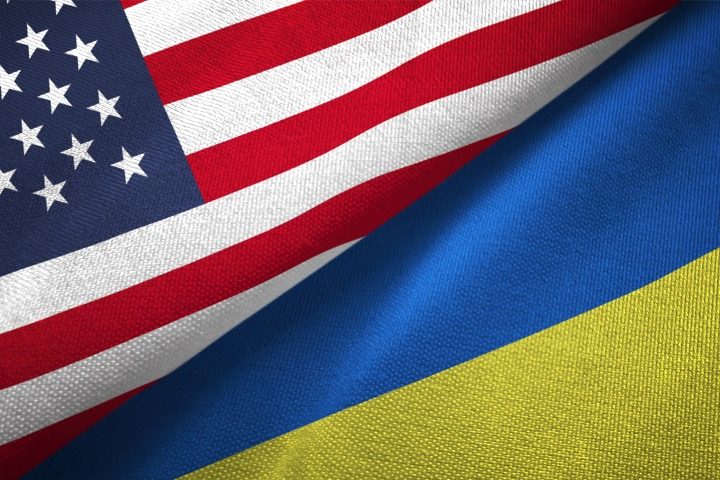
In a recent interview with CNN, Acting U.S. Deputy Secretary of State Victoria Nuland said that Washington spends most of the money allocated as aid for Ukraine on weapons production domestically.
Regarding the pending aid package that Congress failed to approve before going on winter recess, Nuland said she has “strong confidence” that it will pass, as it supposedly ensures America’s own interests.
“We have to remember that the bulk of this money is going right back into the U.S. economy, to make weapons, including good-paying jobs in some forty states across the U.S.,” she stated, adding that support for Ukraine in America “is still strong.”
Lawmakers in the House of Representatives blocked the bill requested by President Joe Biden for an aid package for Kyiv worth $60 billion, most of which is set aside for weapons, earlier this month. They are expected to restart discussions on the package after they reconvene on February 28.
U.S. Secretary of State Antony Blinken also recently admitted that roughly 90 percent of the financial assistance for Ukraine is spent on domestic production of weapons and equipment. At a press conference on December 20, he said additional tranches would “benefit American business, local communities, and strengthen the U.S. defense industrial base.”
Based on Germany’s Kiel Institute, which tracks international support for Kyiv, Washington allocated nearly $73.7 billion in aid for Ukraine between January 24, 2022 and January 15, 2024, including roughly $46.6 billion in military aid.
Nonetheless, Kyiv has been increasingly demanding more aid from its Western supporters. Several days ago, Ukrainian leader Volodymyr Zelensky warned visiting American legislators that Kyiv would “lose the war” against Russia without Washington’s assistance, as per U.S. Senate Majority Leader Chuck Schumer (D-N.Y.).
Russia has slammed the United States and other Western nations for their military support for Kyiv, contending that it is only dragging out the conflict.
Based on a recent survey from the Harris Poll and the Quincy Institute, Americans increasingly do not support U.S. military aid to Kyiv unless it is linked to peace talks. Only 22 percent of respondents said Washington should continue “unconditionally” providing Ukraine with financial assistance, while 48 percent said new funding must be conditioned on efforts toward a diplomatic solution. Around one-third said the United States should stop all aid.
Politico reported on February 23 that the “frustration” in Zelensky’s office is “palpable,” as the Ukrainian leader is growing impatient waiting for more military aid from Washington. The atmosphere in Kyiv has been “quite grim, and frustration was palpable” in recent weeks, “a person close to Zelensky’s office” said. “Almost everyone is convinced that the aid will come soon,” the source said, adding that “while the president’s office is waiting for good news from the U.S., it is also working to boost mobilization and war planning.”
Washington has already set aside around $45 billion in military aid to Kyiv, out of a total of $113 billion allocated for Ukraine. However, Biden is currently pressuring Congress to pass a foreign aid bill that would include another $60 billion worth of arms, ammo, and other military support.
The bill has met with resistance in the Republican-controlled House of Representatives, with the GOP refusing to bring it to a vote unless it is linked to increased funding for border security and a tightening of U.S. immigration law.
Last weekend, Russian forces captured the key Donbass town of Avdeevka, driving Ukrainian forces from a stronghold that they had occupied and fortified since 2014. Zelensky maintained from the moment Avdeevka fell that the town would have remained in Ukrainian hands had the U.S. given him ample weapons and ammunition. “Unfortunately, keeping Ukraine in an artificial shortage of weapons … allows [Russian President Vladimir] Putin to adapt to the intensity of hostilities,” he said.
The White House and the Pentagon have both cautioned that without more American funding, the situation in Avdeevka could soon be replicated in other Ukrainian-held cities and towns.
Besides an escalating shortage of ammunition, Zelensky is also facing a “critical” manpower shortage, The Washington Post reported earlier this month, adding that this deficit could lead to a collapse along the front. Ukraine has lost more than 383,000 men since the conflict began two years ago, according to the latest tally from the Russian Defense Ministry.
Despite the degree of Kyiv’s losses, Zelensky is currently aiming to conscript another 450,000-500,000 soldiers, relying on a mobilization law making its way through parliament. In an interview with Fox News recently, Zelensky said that his military would soon “prepare a new counteroffensive, a new operation.”
Zelensky admitted on Ukrainian TV on February 25 that he suspects that members of his high command and international partners could be leaking information to Russia. His comments came in light of a deteriorating battlefield situation for Kyiv and ammunition shortages due to dwindling military aid from its international sponsors.
Regarding the “new counteroffensive,” Zelensky revealed to journalists that “We have a plan, a clear plan. Several plans will be prepared because of information leaks.” He added that the fewer people who know about the plans, the better. “The plans for our counter-offensive actions last autumn were on the table in the Kremlin before those counter-offensive actions had even started,” he claimed.
He explained that given the number of tasks his high command faces, however, many people need to participate in the operation, increasing the chances for leaks.
“There are also some of our partners who, in order to provide us with weapons, know some of the directions of our actions [on the battlefield]. They must know, or they won’t allocate the appropriate package. And when there are so many people, the enemy has more details,” he said, although he did not elaborate on the people he suspects of leaking information.
Speaking to ABC News on February 25, White House National Security Advisor Jake Sullivan said that the early delivery of U.S. fighter jets would not have altered the course of Ukraine’s failed summer counteroffensive, as there were not enough trained pilots to fly them. He also contested the narrative that the White House did not provide enough “war-fighting equipment” for Ukraine to succeed on the front line.
“The idea that we did not mobilize a massive quantity of resources and capabilities to deliver to Ukrainians simply doesn’t wash,” he said in response to a question on whether Washington’s incremental approach to deliveries of advanced weaponry was to blame for Ukraine’s lack of progress on the battlefield. “If you look at some total of what the United States provided to Ukraine in this fight it is an incredible quantity of material delivered at speed, at scale outpacing the expectation.”
“There are additional capabilities that Ukrainians have looked for, F-16 being one of them,” he continued, explaining that while the U.S. is prepared to supply the jets, the real challenge Ukraine faces is that “there aren’t many pilots to be able to pilot those aircraft.” Kyiv has repeatedly requested Western fighter jets, saying they are needed to counter Russian air attacks.
In August, the U.S. permitted Denmark and the Netherlands to donate F-16s to Ukraine, with the first deliveries scheduled for this year. NATO member states agreed to set up a coalition to help train Ukrainians to fly the Western-made aircraft. However, Moscow has warned that the move would be a risky escalation given that some F-16 modifications can carry nuclear bombs, and vowed to destroy the jets in Ukraine if they arrive.


